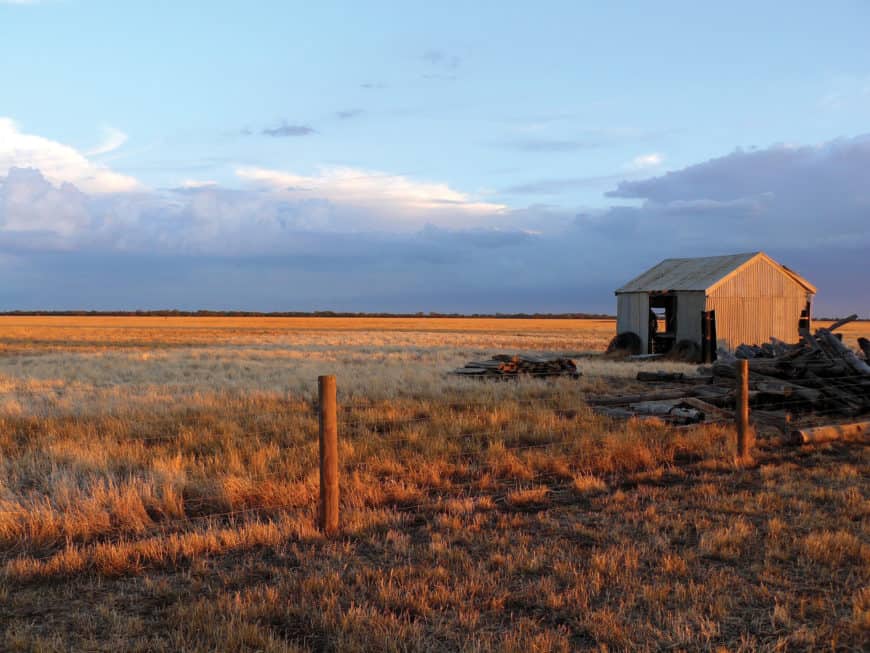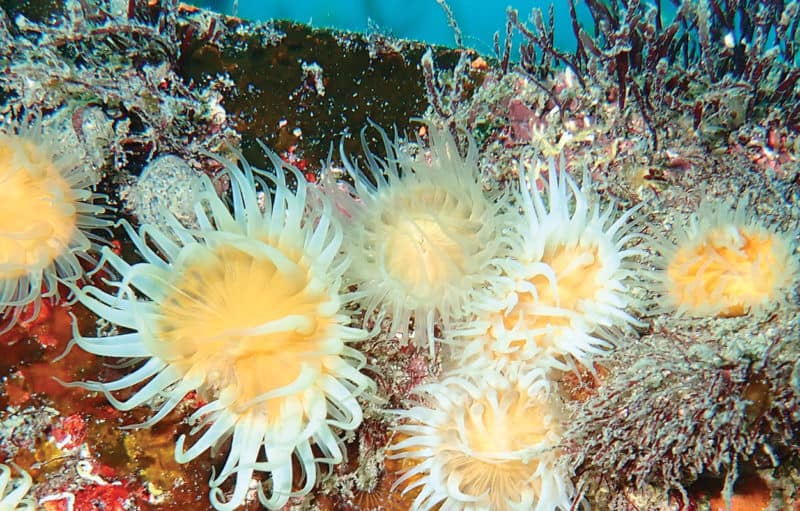PARK WATCH Article November 2022 |
Despite their importance and diversity – and the science – Victoria’s grasslands are experiencing an ongoing decline. Adrian Marshall, Facilitator of the Grassy Plains Network, describes the beauty of these grasslands and how our campaigns are aimed at stemming the tide.
I often hear that Victoria’s ancient grasslands are disappearing. But the fact is they’re not ‘disappearing’, they’re being destroyed, neglected – or worst, completely ignored. What gives me hope is the potential for our elected representatives to reverse the history of decline and start protecting our surviving native prairies.
VNPA’s grasslands campaign began back in in 1984. We began by undertaking a thorough review of existing research on what remained of Victoria’s remnant vegetation. Our aim was to identify the deficiencies in the protection of the native plant and animal communities in the State.
The Review, undertaken by Doug Frood from the Botany Department of the University of Melbourne, highlighted the perilous state of our grasslands, and their complete absence from the parks estate. It built on pioneering work by Richard Groves (1979) and Neville Scarlett and Bob Parsons (1981), who first brought the wholesale loss of the temperate grasslands of south-eastern Australia to the attention of the scientific community.
Victoria’s grasslands had been grazed, ploughed and disconnected from First Nations management practices. They’d been built on to such an extent that the only remaining species-rich patches were almost entirely confined to rural roadsides, fenced pioneer cemeteries and railway lines. Only a tiny fraction remained.
It was big news, shocking in the scale of loss, but welcome in that it in spurred conservationists to action. Grasslands, along with the remnant Box-Ironbark woodlands of central Victoria, the heavily forested Central Highlands to the east of Melbourne, and Victoria’s large marine and coastal regions, became a key focus for VNPA.
An early success
Terrick Terrick State Park, east of Echuca, was an early campaign success. Now a national park, it is a glorious example of what is known as the Natural Grasslands of the Murray Valley Plains, known for its beautiful Swainsona – a flowering plant of 84 species, all but one endemic to Australia. Terrick Terrick is the last bastion of the remarkable and critically endangered Plains-wanderer.

A hard sell
Despite the urgency for conservation, grasslands have proved to be difficult to protect for several reasons.
Conservation is often hampered by the value of the land either for grazing or cropping or, in more urban situations, for development. Some of the largest areas of grassland on the Victorian Volcanic Plain are in or around Melbourne and are under immense pressure from developers.
Socially, grasslands are stigmatised as weedy, snake-infested fire hazards. Their biodiversity values are often hard to see, requiring a person to get down and look closely between the tussocks. Flowering times can be brief, flowers themselves are quite small, and big shows of flowers are uncommon.
Most grasslands are quite degraded, so when we visit a grassland, or drive past it at 100kmh, we’re not seeing its full potential.
The historic record, and Aboriginal knowledge, tells us there used to be vast fields bursting with colour, sight and scent.
The amazing Diuris fragrantissima, an orchid with a heady perfume, is listed as endangered both federally and within Victoria, but was once so common it was used for wedding bouquets.
Culturally, Australians are generally not proud of their grasslands the way, say, Americans are of their prairies. Many remain unaware of their existence at all.
Because of these reasons, progress on protecting grasslands has been slow. Nevertheless, we persist with our grasslands campaigning, with much work up to 1997 being led by James Ross, who represented VNPA on the Roadsides Conservation Advisory Committee, Greening Australia’s Urban Advisory Committee and the Recovery Teams for the Striped Legless Lizard and Southern Lined Earless Dragon. The Grassy Ecosystems Network, a cooperative across the four south-eastern states that was hosted at our main office, also led the charge.
In 1998 we published Plains Wandering: Exploring the grassy plains of south-eastern Australia. More than just one of the first field guides to Victoria’s grasslands, its introductory essays educated many readers on the complexities of grassland conservation.
The fruits of this labour have seen a shift in public appreciation of grasslands. Groups such as Friends of Merri Creek took on valuable work. A number of remnant areas were acquired for reserves, such as Craigieburn (1996), Cressy, Derrimut, Blacks Creek near Skipton (2002), and the former RAAF base at Laverton. The airbase supported one of the best remnants of native grassland in the region, including important populations of endangered and vulnerable plants such as Spiny Rice-flower, Large-fruit Groundsel and rare orchids.
VNPA also focused on educational outreach, with the publication of Looking After Native Grasslands and Grassy Woodlands: A guide for landowners, government agencies, extension staff, conservation groups, teachers, students (1998).
In 2008, the Commonwealth’s EPBC Act declared the Natural Temperate Grasslands of the Victorian Volcanic Plain as critically endangered.
The Western Grassland Reserves
Grassland conservation changed dramatically in 2009 with the expansion of Melbourne’s Urban Growth Boundary. The Melbourne Strategic Assessment (MSA) was a deal between Victoria and the Commonwealth that turned-off federal EPBC protections for the environment across the 60,000 hectares of to-be-released land of the new growth corridors. In return, developers would fund, through an offset program, the purchase and management of the Western Grassland Reserves – 15,000 hectares of grassland just outside the new Urban Growth Boundary. In addition, 36 conservation reserves were declared within the new growth corridors. Also promised were 5000 hectares of Grassy Eucalypt Woodland reserve.
But the devil is in the detail. Much of the 15,000 hectares of the land that will become, over 50 years, the Western Grassland Reserves, is degraded, species-poor grassland thick with highly invasive weeds. The surveys that were done were rushed and failed to identify significant areas of grassland (and other ecosystems) within the growth corridors. The 36 conservation reserves now languish without suitable management, their biodiversity rapidly being lost to lack of appropriate management. The 5000 hectares of Grassy Eucalypt Woodland reserve have yet to materialise.
VNPA’s chief grassland campaigner, Yasmin Kelsall, and a broad coalition of around 20 mostly local environmental groups, worked hard to improve much of the detail of this poorly thought-through, developer-friendly model of grassland conservation. While some important improvements were made, the foundation process was rushed and the final form of the MSA is fraught with problems.
The Grassy Plains Network
In 2018, grassland experts, land managers, conservationists and community members came together in Melbourne at the public conference Respect, Protect and Re-connect Melbourne’s Grassy Plains, at which the Grassy Plains Network was formed. This broad coalition, now philanthropically funded, is hosted by VNPA and provides ongoing advocacy for the grasslands in and around Melbourne.
Loss of appetite
Today it appears the state government has lost its appetite for further grassland conservation.
Large high-quality patches of grassland exist within the middle suburbs of Melbourne that desperately need to be brought into the state reserve system. Some efforts have been made to increase funding for the Western Grassland Reserves, but the fundamental problems remain.
Outside of Melbourne, good work is being done. Catchment Management Authorities, local councils, Landcare and community groups are using broad-scale restoration to expand and reconnect diverse native grassland communities and protect remnant roadsides. But dependence on local volunteer fire brigades for the requisite annual burning is a huge stumbling block for these projects.
Private land
Putting aside the as-yet unfulfilled promise of purchasing the Western Grassland Reserves, the biggest gains that can be made now are on private land, where almost 90 per cent of the remaining extent of native grasslands occur. Over the years, Trust for Nature, in partnership with other organisations, has supported many landowners to place long-term protective conservation covenants on grassland. More than 70 landholders now help protect (in perpetuity) about 1500 hectares of native grassland in the Victorian Riverina and on the Victorian Volcanic Plain. The Trust has also helped protect (or has facilitated protection of) an additional 5000 hectares of native grassland on the Northern Plains through direct acquisition or assisted purchase by the Victorian Government.
It is important to note that grassland on private land exists at the whim of the landholders. While it is illegal to clear endangered grassy ecosystems, if they are left unmanaged, in the absence of burning, grazing or slashing, the tussocks thicken and suffocate the biodiversity in the vital inter-tussock spaces. The grassland ecosystem can collapse and prolific weeds can spread. There is an urgent need to create legislation that can prevent this sort of ‘native vegetation clearing by stealth’.
What do we need now?
Restoration rather than reservation looks like the best path forward. The huge swathes of weeds currently being removed from the Western Grassland Reserves create a botanic vacuum that needs to be filled through a direct seeding program of sufficient and substantial scale. With such a program, we can fire-up the native seed industry and roll out the direct seeding techniques we know will work, across the whole of Victoria.
The Western Grassland Reserve program needs urgent attention to create a grasslands vision and to drive community engagement. It must become a go-to destination for schools, scouts, locals and tourists. It must showcase the scale and beauty of what our once magnificent grasslands still can be.
The Western Grassland Reserves are one of the best hopes for transforming public opinion about grasslands, to make us, as a nation proud, of our land of sweeping plains.
We need better funding for Parks Victoria to manage large areas of grassland at a best-practice level. Our grasslands need more love than they are currently getting, with most in decline due to the spread of weeds.
Another crucial means of transforming the state of our grasslands is by welcoming back the First Nations people disenfranchised from Country and reintroducing their management practices and their understanding of these systems.
We urgently need the acquisition of remaining high-quality grasslands in urban Melbourne, places like Ajax Road, Burns Road, Solomon Heights and the Broadcast Australia site.
We also need a new grassy design ethos: the visual and experiential qualities of our diverse grasses have yet to be fully explored through design.
Has anything changed?
The words of the The Review, undertaken by Doug Frood from the Botany Department of the University of Melbourne, are as relevant today as they were in 1987:
Very little remains of these formerly widespread vegetation types, at least in relatively intact condition, and relics are frequently deteriorating at an alarming rate. Little land remains in public ownership on the lowland plains, and demand for various types of public uses can be high. Grasslands in particular are extremely poorly represented in biological reserves.
Image: Mark Antos
Take action for the grasslands
Did you like reading this article? You can read the latest full edition of Park Watch magazine online.
Want to be kept up to date about this and other nature issues in Victoria? Subscribe to our email updates.
You can also receive our print magazine Park Watch four times a year by becoming a member. Find out more.
